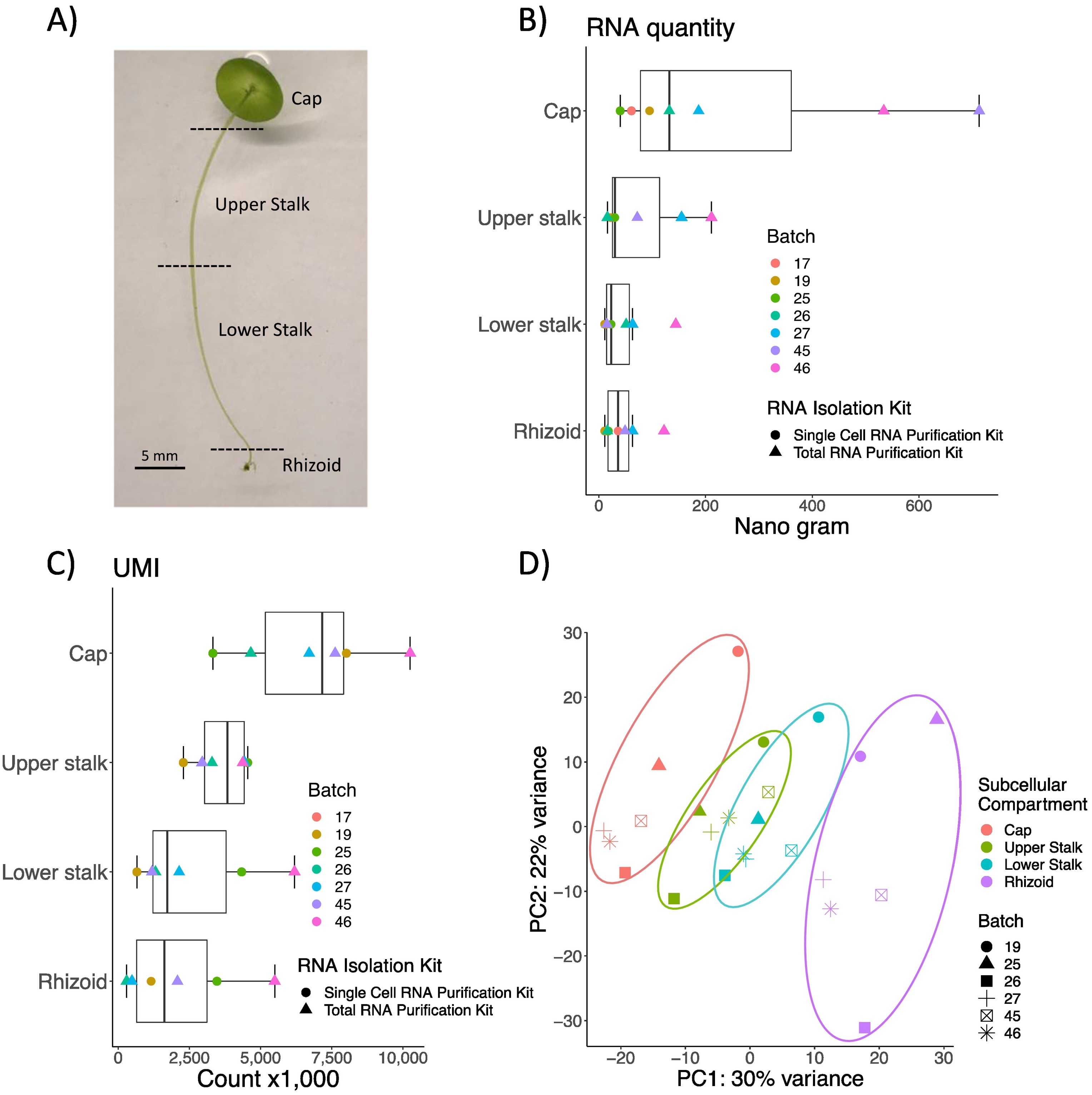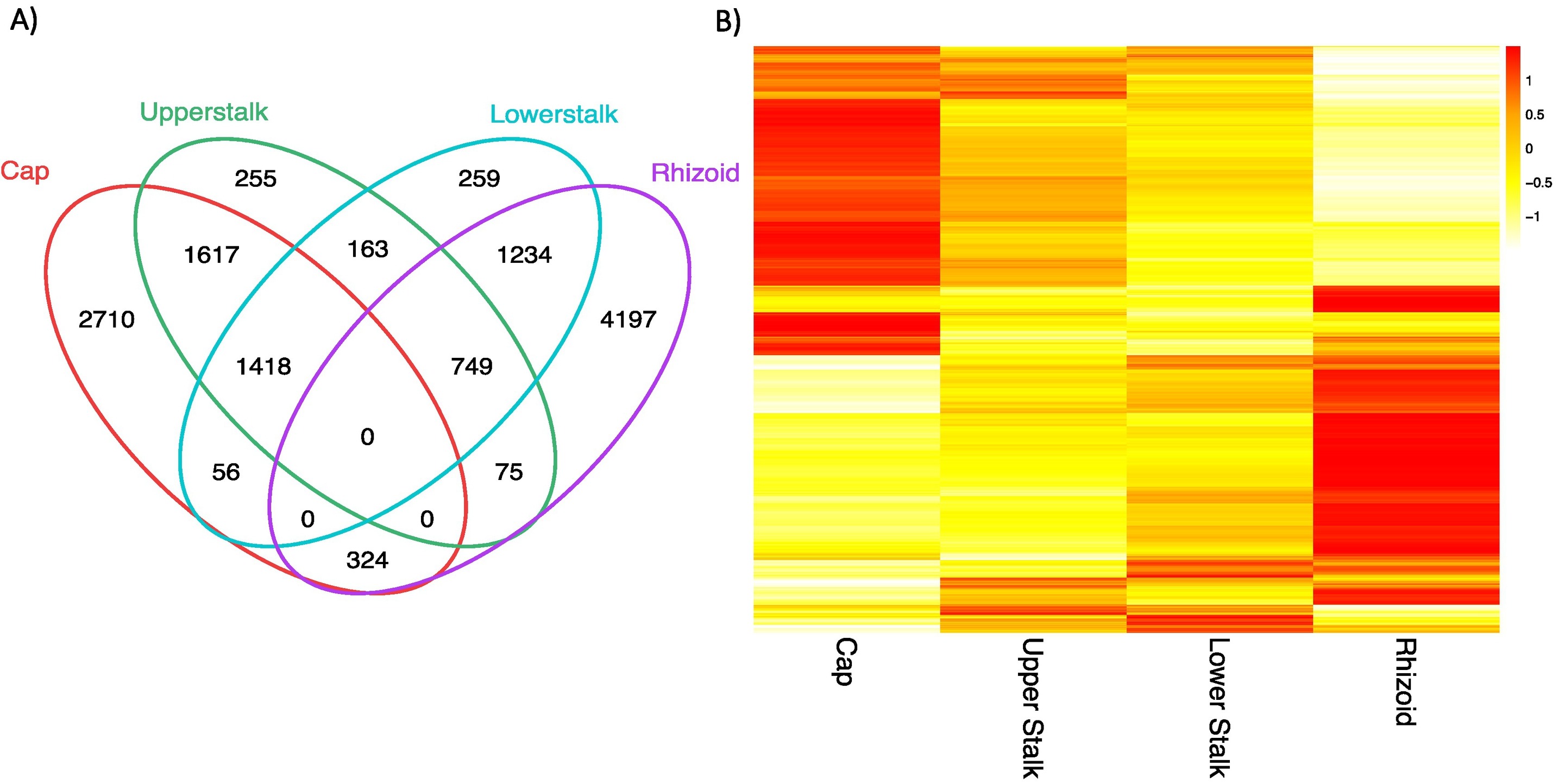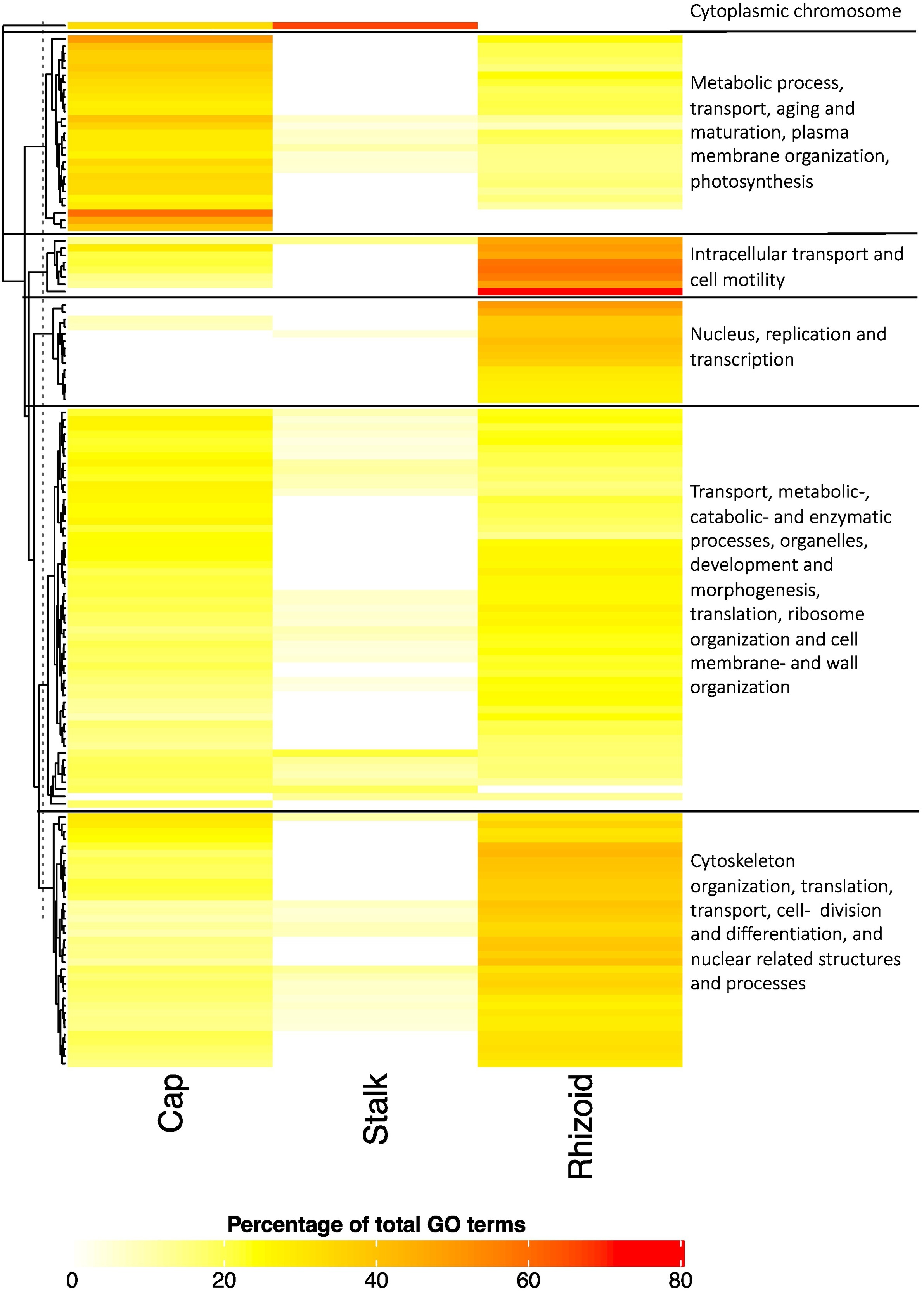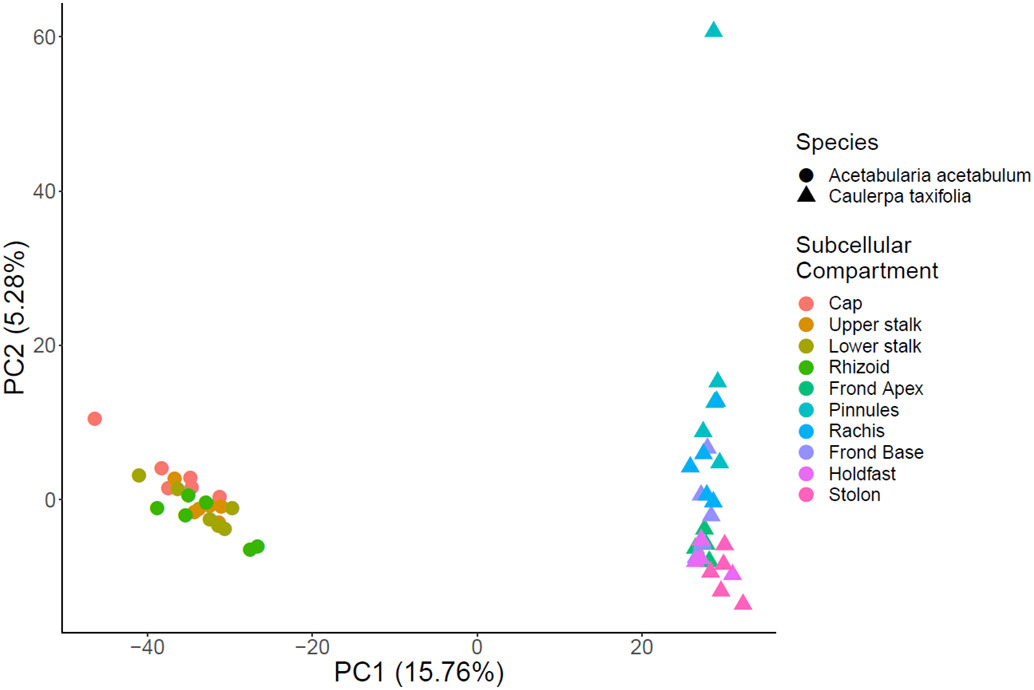Compartmentalization of mRNAs in the giant, unicellular green alga Acetabularia acetabulum
Andresen, I. J., Orr. R. J. S., Shalchian-Tabrizi, K. and Bråte, J. 2021. Algal Research. doi:10.1016/j.algal.2021.102440





Abstract
Acetabularia acetabulum is a single-celled green alga which has historically been an important model system in cell biology. Here, we attempt to re-introduce A. acetabulum as a model system through the investigation of the subcellular localization of mRNAs. A. acetabulum is a macroscopic single-celled alga with a highly complex cellular morphology. The cell is gigantic, and the single nucleus, which is located at the basal end, is several centimeters away from the umbrella-shaped tip. To better understand the genetic basis of the morphology of this alga, we aimed to characterize the mRNA composition in four different subcellular regions of adult cells. Analyses of the quantitative gene expression data revealed a high degree of differentially distributed gene products. Gene transcripts involved in photosynthesis were mainly accumulated in the apical cap structure, while the basal end carrying the nucleus was enriched for nuclear processes such as DNA replication and transcription. Cytoskeletal components, intracellular transport and protein translation was present throughout this highly elongated cell. An important observation was that some gene transcripts were distributed throughout the cell while others, often functionally related transcripts, were localized in large pools at distinct subcellular regions. This suggests that post-transcriptional regulation and specific cellular localization of gene products may be important mechanisms behind morphogenesis in this gigantic cell.